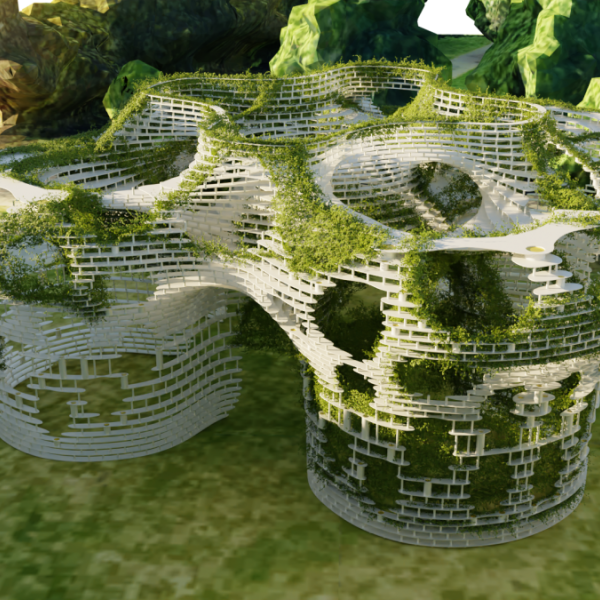Scenius or Communal Genius
Scenius or Communal Genius..
Scenius is like genius, only embedded in a scene rather than in genes. Brian Eno suggested the word to convey the extreme creativity that groups, places or "scenes" can occasionally generate. His actual definition is: "Scenius stands for the intelligence and the intuition of a whole cultural scene. It is the communal form of the concept of the genius." Individuals immersed in a productive scenius will blossom and produce their best work. When buoyed by scenius, you act like genius. Your like-minded peers, and the entire environment inspire you. The geography of scenius is nurtured by several factors:
Mutual appreciation – Risky moves are applauded by the group, subtlety is appreciated, and friendly competition goads the shy. Scenius can be thought of as the best of peer pressure.
Rapid exchange of tools and techniques – As soon as something is invented, it is flaunted and then shared. Ideas flow quickly because they are flowing inside a common language and sensibility.
Network effects of success – When a record is broken, a hit happens, or breakthrough erupts, the success is claimed by the entire scene. This empowers the scene to further success.
Local tolerance for the novelties – The local "outside" does not push back too hard against the transgressions of the scene. The renegades and mavericks are protected by this buffer zone. Scenius can erupt almost anywhere, and at different scales: in a corner of a company, in a neighborhood, or in an entire region. The history of art and science is crammed with episodes of scenius. In modern literature there was the Algonquin Round Table, the Bloomsbury Group, the Inklings in Oxford, UK. In art there was Paris in the 20s, the lofts in Soho, NYC, and Burning Man recently. In science there was the Lunar Society in England, Building 20 at MIT, or the ever-spreading Silicon Valley. (...) Camp 4 is a nondescript, bland, dusty campground. Building 20 at MIT, the home of fantastic engineering exploits like the improvement of radar, was likewise architecturally boring, almost dilapidated. Soho was blocks of unwanted industrial space. Like these other places, Camp 4 was a generic space with flexibility. However Camp 4 is also a walk-in camp. You need to haul everything on your back. That immediately filters out a lot of wannabes. The absence of cars also keeps everyone around. From the outside you would never guess there was anything special about the place. I think that is true of most scenius. (...) Although many have tried many times, it is not really possible to command scenius into being. Every start up company, or university would like their offices to be an example of scenius. The number of cities in the world hoping to recreate the scenius of Silicon Valley is endless, but very few have achieved anything close. Innumerable art scenes begin and vanish quickly.
The serendipitous ingredients for scenius are hard to control. They depend on the presence of the right early pioneers. A place that is open, but not too open. A buffer that is tolerant of outlaws. And some flash of excitement to kick off the virtuous circle. You just can't order this. What Camp 4 illustrated is that the best you can do is NOT KILL IT. When it pops up, don't crush it. When it starts rolling, don't formalize it. When it sparks, fan it. But don't move the scenius to better quarters. Try to keep accountants and architects and police and do-gooders away from it. Let it remain inefficient, wasteful, edgy, marginal, in the basement, downtown, in the 'burbs, in the hotel ballroom, on the fringes, out back, in Camp 4..
(Bruce Sterling June 16, 2008 WIRED Magazine)
"Scenius" is a term popularized by Brian Eno and is often used to describe how a group of people collaboratively contribute to and amplify individual creativity within a creative and cultural context. Eno's definition emphasizes that creativity emerges not only from great individuals (such as those considered "geniuses") but also from social interactions and collective efforts within a specific community and environment. Scenius can be applied across various disciplines including music, art, science, and technology. People with common interests and passions often achieve greater innovations and discoveries by sharing knowledge and resources, collaborating, and inspiring each other, typically achieving more collectively than would be possible individually.
Key elements of Scenius include:
1.Networks: Scenius thrives on well-connected communities that facilitate the free flow and sharing of ideas, allowing individuals to exchange expertise and perspectives.
2.Collaboration: It is a process based on collaboration, where individuals work together to complement and develop each other's talents and ideas, accelerating the emergence of innovations and solutions.
3.Transformational Events: Scenius often revolves around pivotal events or projects that channel the community's energy and create creative momentum.
4.Sharing Culture: There is a culture of sharing knowledge, resources, and experiences, enabling continuous learning and enriching the creative process.
5.Environment and Context: Creative achievements often arise in specific times and places with conducive environments, where creative spaces, culture, and supportive infrastructure converge.
Deepening the Elements of Scenius:
1.Flow of Ideas:
Dialogue and Discussion: Enlightening and inspiring dialogues and discussions fuel creativity. Healthy debates within the community can help bring forth new perspectives.
Open Source Culture: In the world of technology, open-source projects encourage sharing knowledge and collaboration. Such projects are developed with contributions from many individuals and are made available to large audiences.
2.Collective Knowledge:
Mentorship and Educational Relationships: Experienced individuals sharing their knowledge and experiences with less experienced ones enhances overall knowledge and accelerates the learning curve within the community.
Multidisciplinary Approaches: Collaboration among individuals from different disciplines enables approaching problems from various angles and stimulates innovation.
3.Sources of Inspiration:
Joint Projects and Collaborations: Projects undertaken collectively enhance motivation and commitment within the community. These projects allow individuals in the community to showcase their creativity effectively.
Cultural and Artistic Events: Art galleries, exhibitions, festivals, and concerts dictate trends within the community and create new waves of creativity.
4.Supportive Supplements:
Culture and Values: Shared values and culture within the community encourage members to be creative. Developing a unique culture and value system facilitates individuals' engagement in creativity.
Spatial Factors: Work environments, the layout of physical spaces, and accessible resources influence how community members collaborate and work together.
Throughout history, societies have experienced periods akin to Scenius, demonstrating significant cultural, scientific, and artistic advancements achieved when communities collaborate, share knowledge, and combine their talents. These periods are characterized by communities working together to achieve great creative successes.
Scenius examples:
Renaissance Florence: Florence, where artists like Michelangelo, Leonardo da Vinci, and Raphael lived and worked, allowed individuals and communities to collaborate and produce great works of art and ideas.
Silicon Valley: The epicenter of modern technology, Silicon Valley fosters intense exchange of knowledge and ideas among companies and individuals, leading to major technological innovations and the birth of numerous companies.
1920s Paris: Paris during this period was a meeting point for writers, artists, and thinkers. Intense sharing of ideas and artistic influences led to significant cultural and artistic developments.
The Heart of Music: New Orleans - Spread of Jazz: Known as the birthplace of jazz, New Orleans developed this music genre through the cultural interactions of various ethnic groups, shaped by collective creative energy.
Lens of Technology: Bell Labs - Center of Innovation: Bell Labs hosted many significant inventions from transistors to laser technologies. It exemplifies a "scenius" where scientists and engineers from different fields collaborated.
Cultural New Wave: Harlem Renaissance - Creative Explosion: The Harlem Renaissance was a period of explosive cultural and artistic expression in African-American culture and literature, driven by community interactions and collective efforts.
The Impact of Scenius Across Different Fields:
Education: Community-based learning and projects assist students in transforming abstract ideas into concrete outcomes.
Business World: Innovation teams within companies enable collaboration among employees from different disciplines to develop creative solutions.
Science and Research: Various research centers and laboratories are where scientists come together to collaborate and achieve major breakthroughs. As a result, scenius represents a community environment with a much broader and deeper potential for creativity and innovation than what individuals can achieve alone. By fostering a creative and supportive environment, the collective intelligence and energy contributed by communities extend beyond individual achievements, opening doors to significant cultural and technological advancements.
House of Wisdom in Baghdad (Bayt al-Hikma): Founded in Baghdad during the Abbasid Caliphate under Harun al-Rashid and his son al-Ma'mun in the 8th century, this academy served as a center for scholars, philosophers, and thinkers of the era. Works of ancient Greek, Indian, and Persian origin were translated into Arabic and shared and developed there. This period saw the emergence of many great scientists and philosophers such as Ibn Sina, Al-Kindi, Al-Farabi, and Al-Biruni.
Translation Movement: The translation of ancient Greek philosophy and science into Arabic preserved and advanced knowledge, leading to a scientific and intellectual revival.
Tang Dynasty (618-907): During this period, China experienced significant cultural, artistic, and scientific developments. The capital Chang'an became a cultural center where numerous writers, painters, scientists, and thinkers produced notable works.
Song Dynasty (960-1279): Similarly, significant progress was made in science, technology, philosophy, and art during this period in China. Important inventions such as paper currency, printing, the compass, and gunpowder emerged during this time.
Edo Period Japan (1603-1868): Tokugawa Peace: The Edo period in Japan marked a 250-year era of peace and stability. It saw substantial developments in culture, art, and science. Ukiyo-e woodblock prints, tea ceremonies, kabuki theater, and haiku poetry flourished during this period.
Rangaku (Dutch Learning- Western Sciences): Western science and technologies were introduced to Japan through Dutch traders. This exchange of knowledge laid the foundation for Japan's subsequent modernization processes.
Gupta Empire Period (320-550) in the Indian Subcontinent - Golden Age of Science and Art: The Gupta Empire is considered a cultural and scientific golden age in India. Mathematicians and astronomers like Aryabhata and Varahamihira made significant contributions during this period. Moreover, there were major advancements in Sanskrit literature, art, and architecture.
Seljuk Period (11th-14th century): Anatolia became an important cultural and scientific center during the Seljuk Empire period. Great madrasas were established, and science and education were promoted. The works of Ibn Sina (Avicenna), one of the prominent scholars of the Islamic world, had a significant impact during this time.



